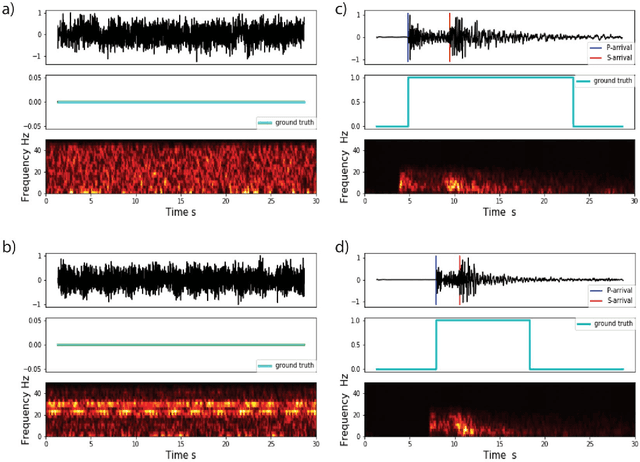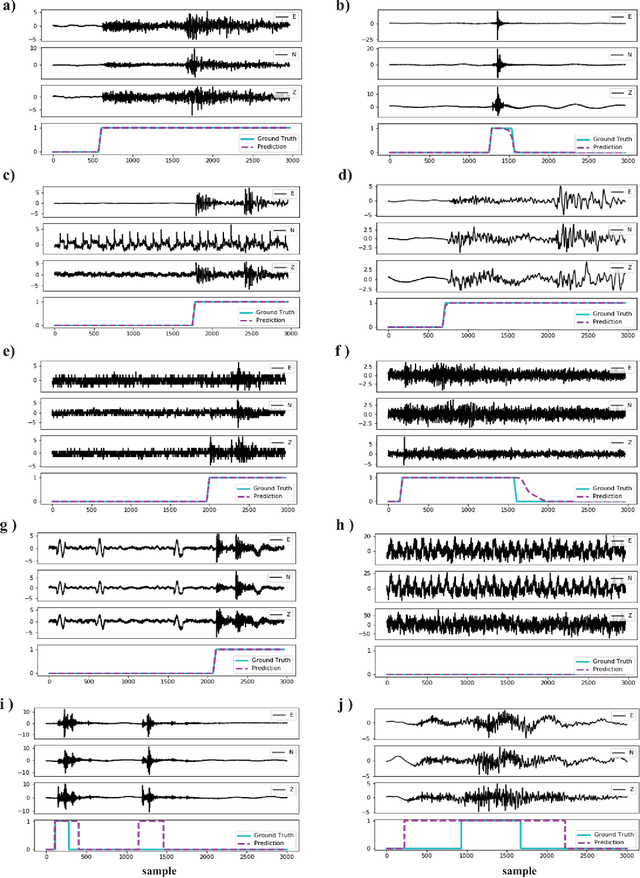S. Mostafa Mousavi
Gemini & Physical World: Large Language Models Can Estimate the Intensity of Earthquake Shaking from Multi-Modal Social Media Posts
May 29, 2024Abstract:This paper presents a novel approach for estimating the ground shaking intensity using social media data and CCTV footage. Employing the Gemini Pro (Reid et al. 2024) model, a multi-modal language model, we demonstrate the ability to extract relevant information from unstructured data utilizing generative AI and natural language processing. The model output, in the form of Modified Mercalli Intensity (MMI) values, align well with independent observational data. Furthermore, our results suggest that beyond its advanced visual and auditory understanding abilities, Gemini appears to utilize additional sources of knowledge, including a simplified understanding of the general relationship between earthquake magnitude, distance, and MMI intensity, which it presumably acquired during its training, in its reasoning and decision-making processes. These findings raise intriguing questions about the extent of Gemini's general understanding of the physical world and its phenomena. The ability of Gemini to generate results consistent with established scientific knowledge highlights the potential of LLMs like Gemini in augmenting our understanding of complex physical phenomena such as earthquakes. More specifically, the results of this study highlight the potential of LLMs like Gemini to revolutionize citizen seismology by enabling rapid, effective, and flexible analysis of crowdsourced data from eyewitness accounts for assessing earthquake impact and providing crisis situational awareness. This approach holds great promise for improving early warning systems, disaster response, and overall resilience in earthquake-prone regions. This study provides a significant step toward harnessing the power of social media and AI for earthquake disaster mitigation.
Bayesian-Deep-Learning Estimation of Earthquake Location from Single-Station Observations
Dec 03, 2019



Abstract:We present a deep learning method for single-station earthquake location, which we approach as a regression problem using two separate Bayesian neural networks. We use a multi-task temporal-convolutional neural network to learn epicentral distance and P travel time from 1-minute seismograms. The network estimates epicentral distance and P travel time with absolute mean errors of 0.23 km and 0.03 s respectively, along with their epistemic and aleatory uncertainties. We design a separate multi-input network using standard convolutional layers to estimate the back-azimuth angle, and its epistemic uncertainty. This network estimates the direction from which seismic waves arrive to the station with a mean error of 1 degree. Using this information, we estimate the epicenter, origin time, and depth along with their confidence intervals. We use a global dataset of earthquake signals recorded within 1 degree (~112 km) from the event to build the model and to demonstrate its performance. Our model can predict epicenter, origin time, and depth with mean errors of 7.3 km, 0.4 second, and 6.7 km respectively, at different locations around the world. Our approach can be used for fast earthquake source characterization with a limited number of observations, and also for estimating location of earthquakes that are sparsely recorded -- either because they are small or because stations are widely separated.
A Machine-Learning Approach for Earthquake Magnitude Estimation
Nov 14, 2019



Abstract:In this study we develop a single-station deep-learning approach for fast and reliable estimation of earthquake magnitude directly from raw waveforms. We design a regressor composed of convolutional and recurrent neural networks that is not sensitive to the data normalization, hence waveform amplitude information can be utilized during the training. Our network can predict earthquake magnitudes with an average error close to zero and standard deviation of ~0.2 based on single-station waveforms without instrument response correction. We test the network for both local and duration magnitude scales and show a station-based learning can be an effective approach for improving the performance. The proposed approach has a variety of potential applications from routine earthquake monitoring to early warning systems.
CRED: A Deep Residual Network of Convolutional and Recurrent Units for Earthquake Signal Detection
Oct 03, 2018



Abstract:Earthquake signal detection is at the core of observational seismology. A good detection algorithm should be sensitive to small and weak events with a variety of waveform shapes, robust to background noise and non-earthquake signals, and efficient for processing large data volumes. Here, we introduce the Cnn-Rnn Earthquake Detector (CRED), a detector based on deep neural networks. The network uses a combination of convolutional layers and bi-directional long-short-term memory units in a residual structure. It learns the time-frequency characteristics of the dominant phases in an earthquake signal from three component data recorded on a single station. We train the network using 500,000 seismograms (250k associated with tectonic earthquakes and 250k identified as noise) recorded in Northern California and tested it with an F-score of 99.95. The robustness of the trained model with respect to the noise level and non-earthquake signals is shown by applying it to a set of semi-synthetic signals. The model is applied to one month of continuous data recorded at Central Arkansas to demonstrate its efficiency, generalization, and sensitivity. Our model is able to detect more than 700 microearthquakes as small as -1.3 ML induced during hydraulic fracturing far away than the training region. The performance of the model is compared with STA/LTA, template matching, and FAST algorithms. Our results indicate an efficient and reliable performance of CRED. This framework holds great promise in lowering the detection threshold while minimizing false positive detection rates.
 Add to Chrome
Add to Chrome Add to Firefox
Add to Firefox Add to Edge
Add to Edge